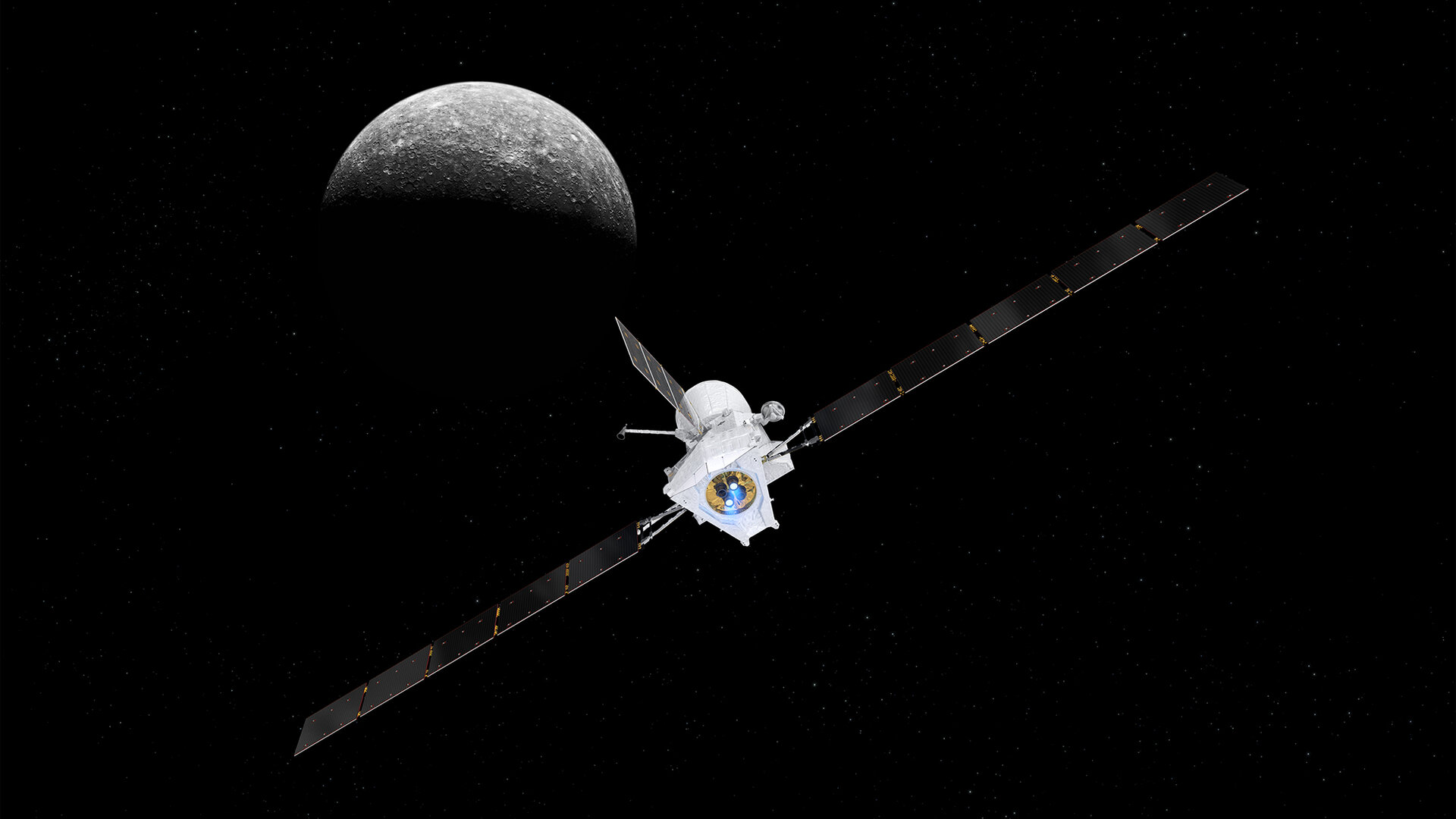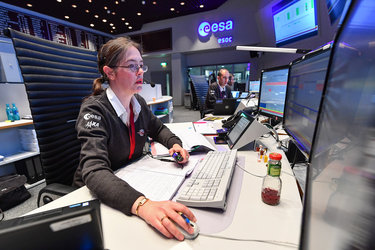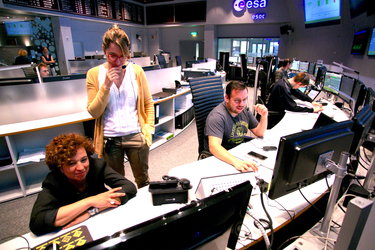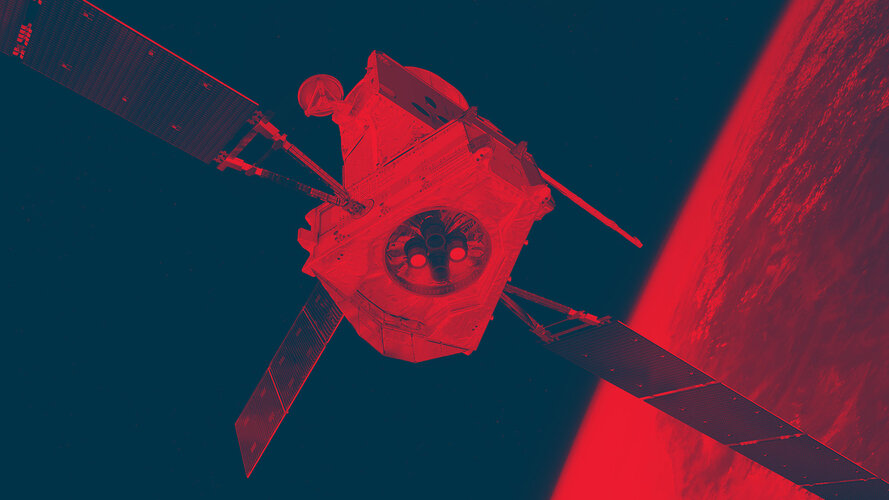BepiColombo now firing on all cylinders
BepiColombo, the joint ESA/JAXA spacecraft on a mission to Mercury, is now firing its thrusters for the first time in flight.
On Sunday, BepiColombo carried out the first successful manoeuver using two of its four electric propulsion thrusters. After more than a week of testing which saw each thruster individually and meticulously put through its paces, the intrepid explorer is now one step closer to reaching the innermost planet of the Solar System.

BepiColombo left Earth on 20 October 2018, and after the first few critical days in space and the initial weeks of in-orbit commissioning, its Mercury Transfer Module (MTM) is now revving up the high-tech ion thrusters.
The most powerful and high-performance electric propulsion system ever flown, these electric blue thrusters had not been tested in space until now.
It is these glowing power-packs that will propel the two science orbiters – the Mercury Planetary Orbiter and Mercury Magnetospheric Orbiter – on the seven-year cruise to the least explored planet of the inner Solar System.
“Electric propulsion technology is very novel and extremely delicate,” explains Elsa Montagnon, Spacecraft Operations Manager for BepiColombo.
“This means BepiColombo’s four thrusters had to be thoroughly checked following the launch, by slowly turning each on, one by one, and closely monitoring their functioning and effect on the spacecraft.”

Testing took place during a unique window, in which BepiColombo remained in continuous view of ground-based antennas and communications between the spacecraft and those controlling it could be constantly maintained.
The first fire
On 20 November at 11:33 UTC (12:33 CET), the first of BepiColombo’s thrusters entered Thrust Mode with a force of 75 mN (millinewtons). With this BepiColombo was firing in space for the very first time.
Three hours later, the newly awakened thruster was really put through its paces as commands from mission control directed it to go full throttle, ramping up to 125mN – equivalent to holding an AAA battery at sea level.
This may not sound like much, but this thruster was now working at the maximum thrust planned to be used during the life of the mission.

Thrust mode was maintained for five hours before BepiColombo transitioned back to Normal Mode. The entire time, ESA’s Malargüe antenna in Argentina was in communication with the now glowing blue spacecraft – the colour of the plasma generated by the thruster as it burned through the xenon propellant.
These steps were then repeated for each of the other three thrusters over the next days, having only a tiny effect on BepiColombo’s overall trajectory.
The small effects that were observed allowed the Flight Dynamics team to assess the thruster performance in precise detail: analysis of the first two firings reveals that the spacecraft was performing within 2% of its expected value. Analysis of the last two firings is ongoing.
Twenty-two arcs to go

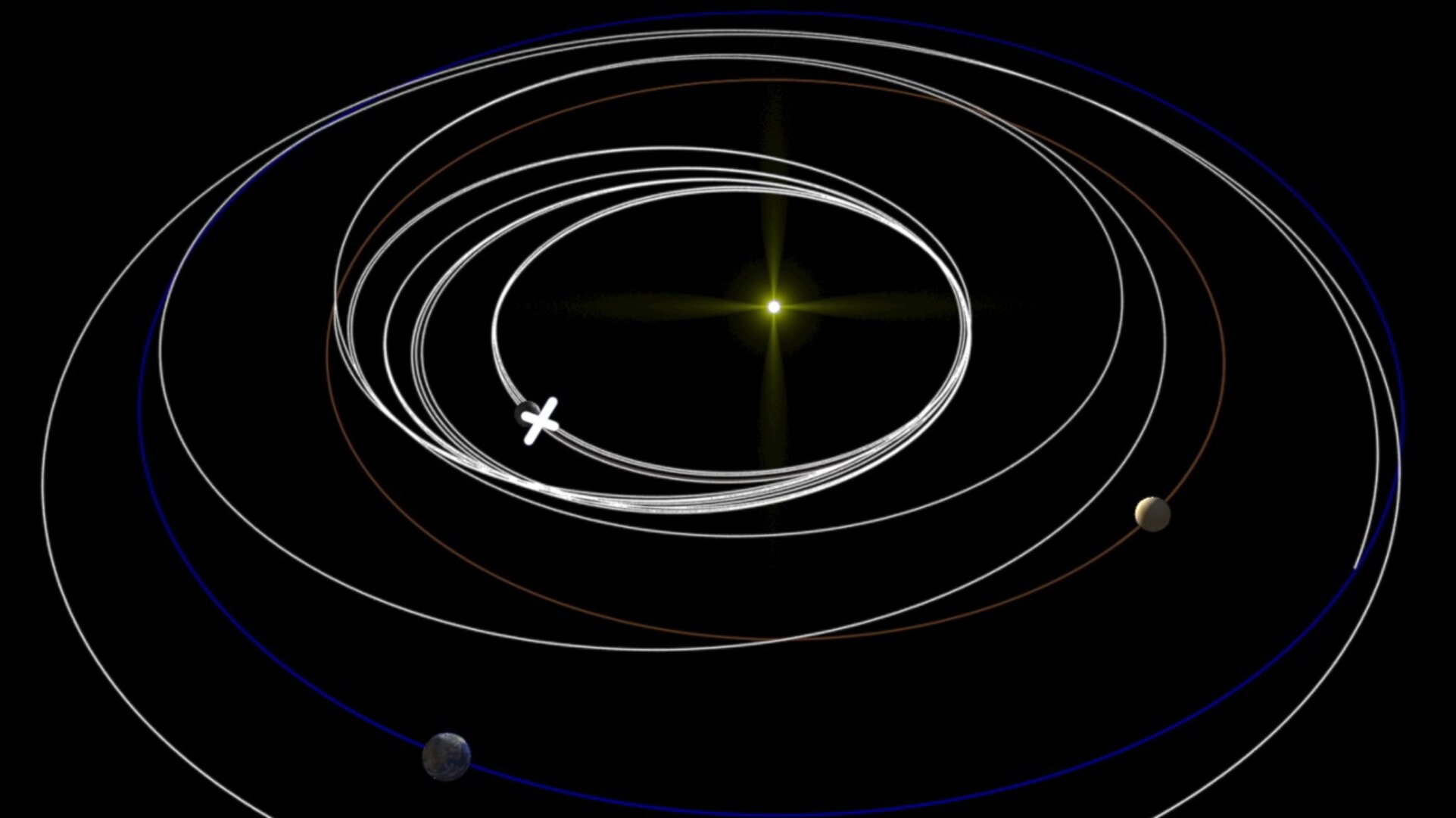
Access the video
“To see the thrusters working for the first time in space was an exciting moment and a big relief. BepiColombo’s seven year trip to Mercury will include 22 ion thrust arcs – and we absolutely need healthy and well performing thrusters for this long trip,” explains Paolo Ferri, ESA’s Head of Operations.
“Each thruster burn arc will last for extended periods of up to two months, providing the same acceleration from less fuel compared to traditional, high-energy chemical burns that last for minutes or hours.”
During each long-duration burn the engines do take eight hour pauses, once a week, to allow the ground to perform navigation measurements in quiet dynamic conditions.
The first routine electric propulsion thrust arc will begin on 17 December, steering BepiColombo on its interplanetary trajectory and optimising its orbit ahead of its swing-by of Earth in April 2020.

Travelling some nine billion kilometers in total, BepiColombo will take nine flybys at Earth, Venus and Mercury, looping around the Sun 18 times.
By late 2025 the transfer module’s work will be done: it will separate, allowing the two science orbiters to be captured by Mercury’s gravity, studying the planet and its environment, along with its interaction with the solar wind, from complementary orbits.
"We put our trust in the thrusters and they have not let us down. We are now on our way to Mercury with electro-mobility,” concludes Günther Hasinger, ESA Director of Science.
“This brings us an important step closer to unlocking the secrets of the mysterious innermost planet and ultimately, the formation of our Solar System.”
Follow ESA Operations on twitter for updates on BepiColombo’s journey, as well as the latest from ESA’s mission control.














 Germany
Germany
 Austria
Austria
 Belgium
Belgium
 Denmark
Denmark
 Spain
Spain
 Estonia
Estonia
 Finland
Finland
 France
France
 Greece
Greece
 Hungary
Hungary
 Ireland
Ireland
 Italy
Italy
 Luxembourg
Luxembourg
 Norway
Norway
 The Netherlands
The Netherlands
 Poland
Poland
 Portugal
Portugal
 Czechia
Czechia
 Romania
Romania
 United Kingdom
United Kingdom
 Slovenia
Slovenia
 Sweden
Sweden
 Switzerland
Switzerland


























